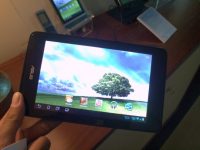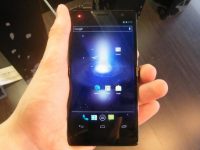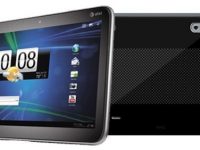Cognitive Radio
Growing numbers of people are making a habit of toting their laptops into Starbuck’s, ordering half-caf skim lattes, and plunking down in chairs to surf the Web wirelessly. That means more people are also getting used to being kicked off the Net as computers competing for bandwidth interfere with one another. It’s a local effect — within 30 to 60 meters of a transceiver — but there’s just no more space in the part of the radio spectrum designated for Wi-Fi.
Imagine, then, what happens as more devices go wireless — not just laptops, or cell phones and BlackBerrys, but sensor networks that monitor everything from temperature in office buildings to moisture in cornfields, radio frequency ID tags that track merchandise at the local Wal-Mart, devices that monitor nursing-home patients. All these gadgets have to share a finite — and increasingly crowded — amount of radio spectrum.
It is high time to think about a solution for it..A much newer technology called “Cognitive radio” has come out with a solution.
What is cognitive radio?
Cognitive radio (CR) is a form of wireless communication in which a transceiver can intelligently detect which communication channels are in use and which are not, and instantly move into vacant channels while avoiding occupied ones. This optimizes the use of available radio-frequency (RF) spectrum while minimizing interference to other users.
In its most basic form, CR is a hybrid technology involving software defined radio (SDR) as applied to spread spectrum communications. Possible functions of cognitive radio include the ability of a transceiver to determine its geographic location, identify and authorize its user, encrypt or decrypt signals, sense neighboring wireless devices in operation, and adjust output power and modulation characteristics.
There are two main types of cognitive radio, full cognitive radio and spectrum-sensing cognitive radio. Full cognitive radio takes into account all parameters that a wireless node or network can be aware of. Spectrum-sensing cognitive radio is used to detect channels in the radio frequency spectrum.
The Federal Communications Commission (FCC) ruled in November 2008 that unused portions of the RF spectrum (known as white spaces) be made available for public use. White space devices must include technologies to prevent interference, such as spectrum sensing and geolocation capabilities.
The idea for CR was developed by Joseph Mitola at the Defense Advanced Research Projects Agency (DARPA) in the United States. Full cognitive radio is sometimes known as “Mitola radio.
How it works?
Particular frequency is transmitted when you choose your preferred station on radio. Range of antenna is tuned to set the station by detect the frequency signals from atmosphere and it receives too many series per seconds. Sometimes other signals interfere in your reception and you can only wait to get rid of it. In all over the world, when you switch on the receiver, it responses instantly to support the frequency that brings broadcasting of station.
Sometimes its interference disturbs necessary and emergency calls on mobile phones. In this situation, quickly call transfer to a comprehensible cell outlet bring about plentiful than simply convenient.
Advantages
Cognitive radio technology can help you in your goods with the widespread observation deal with the cognitive radio.
- Unused spectrum are determined and made use of them automatically.
- Several networks standards are interoperated and recognized automatically.
- Automatically improves and accomplishes its progress and minimize interference.
.
Future of cognitive radio
Today engineers are trying to make further adaptable operating capacity to upcoming radios, mobiles and other wireless communication accessories. In future, it will be permitted that cognitive radio technology almost wireless networking that will use to establish and to connect to any nearby accessible unused radio spectrum that facilitates the customer.









